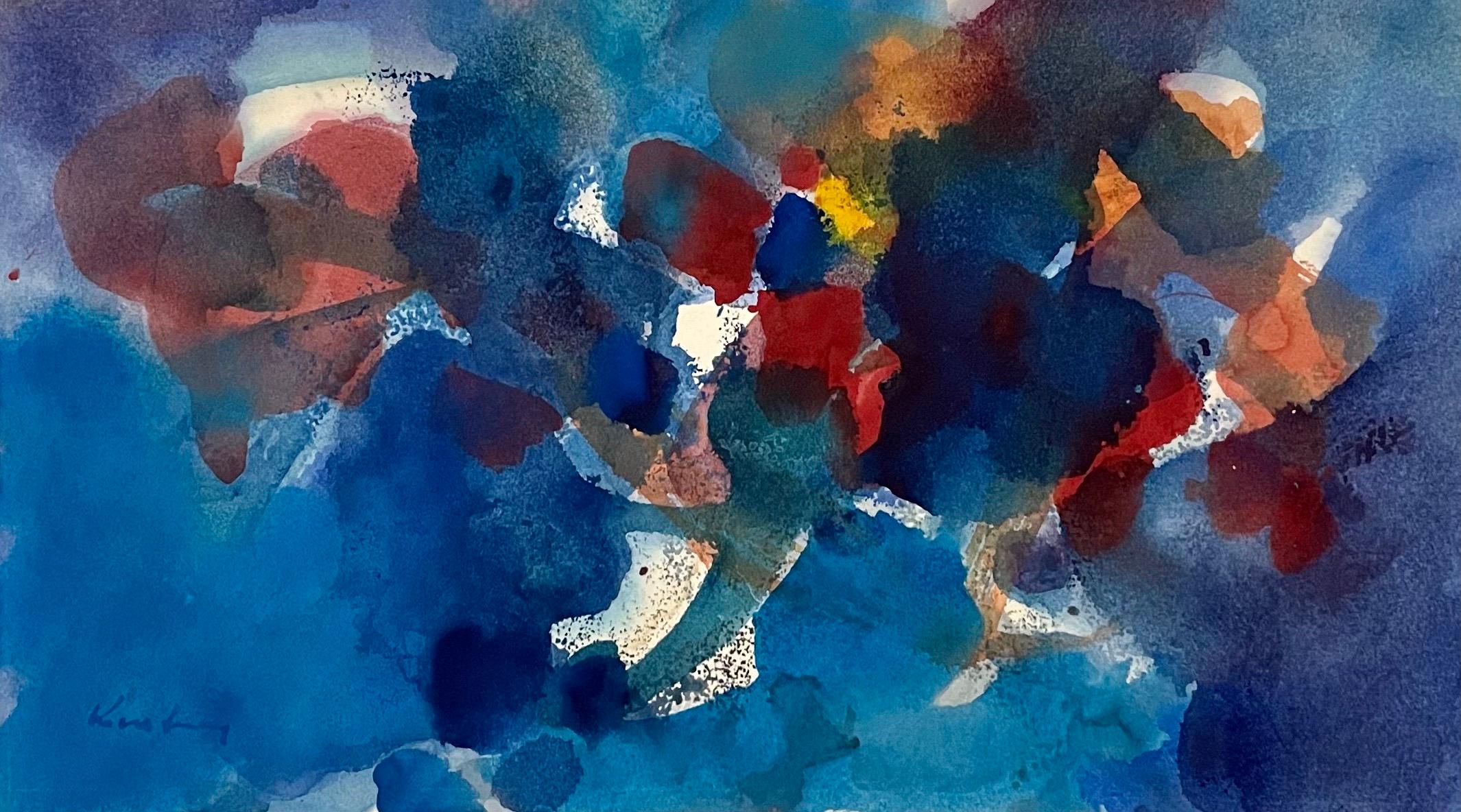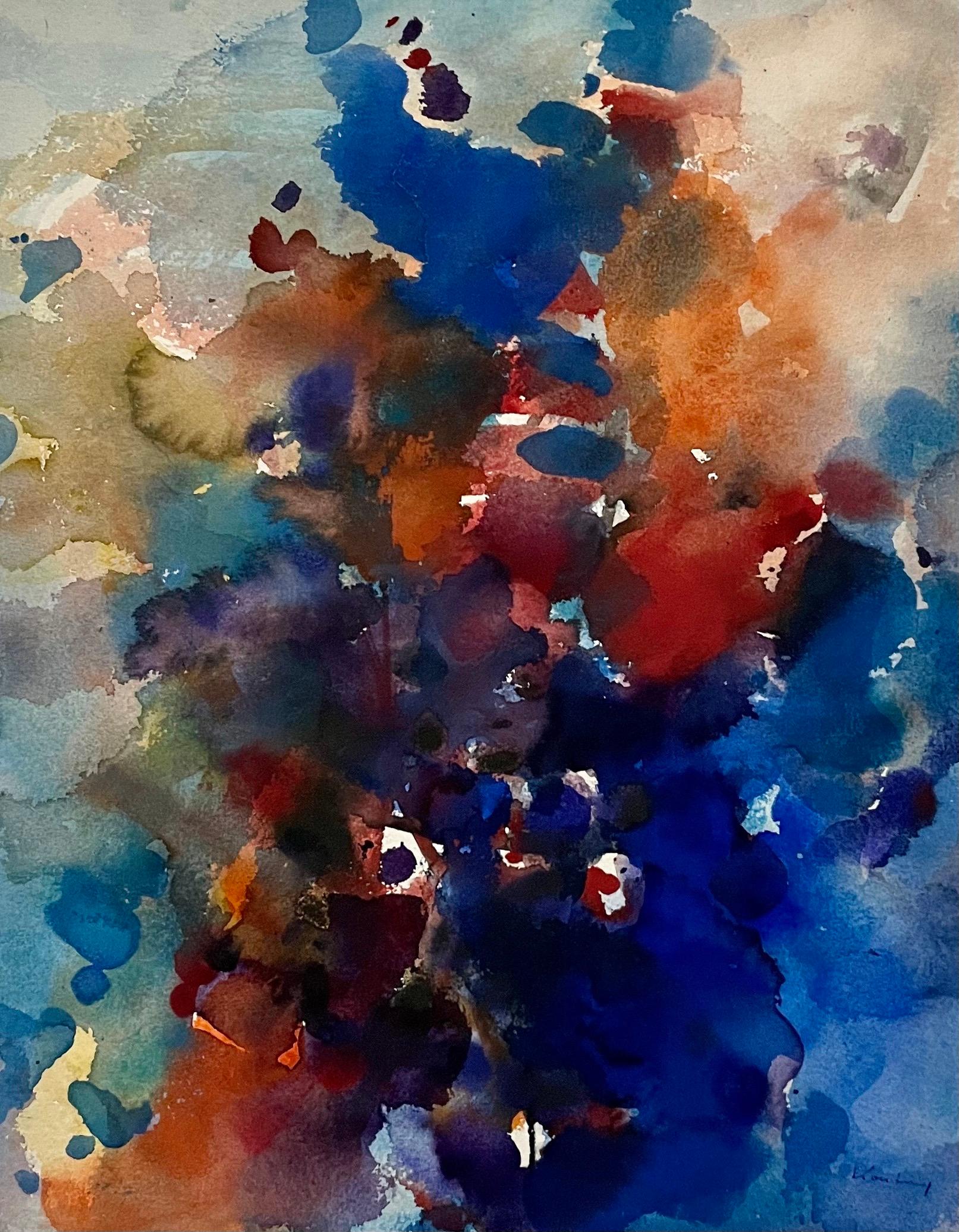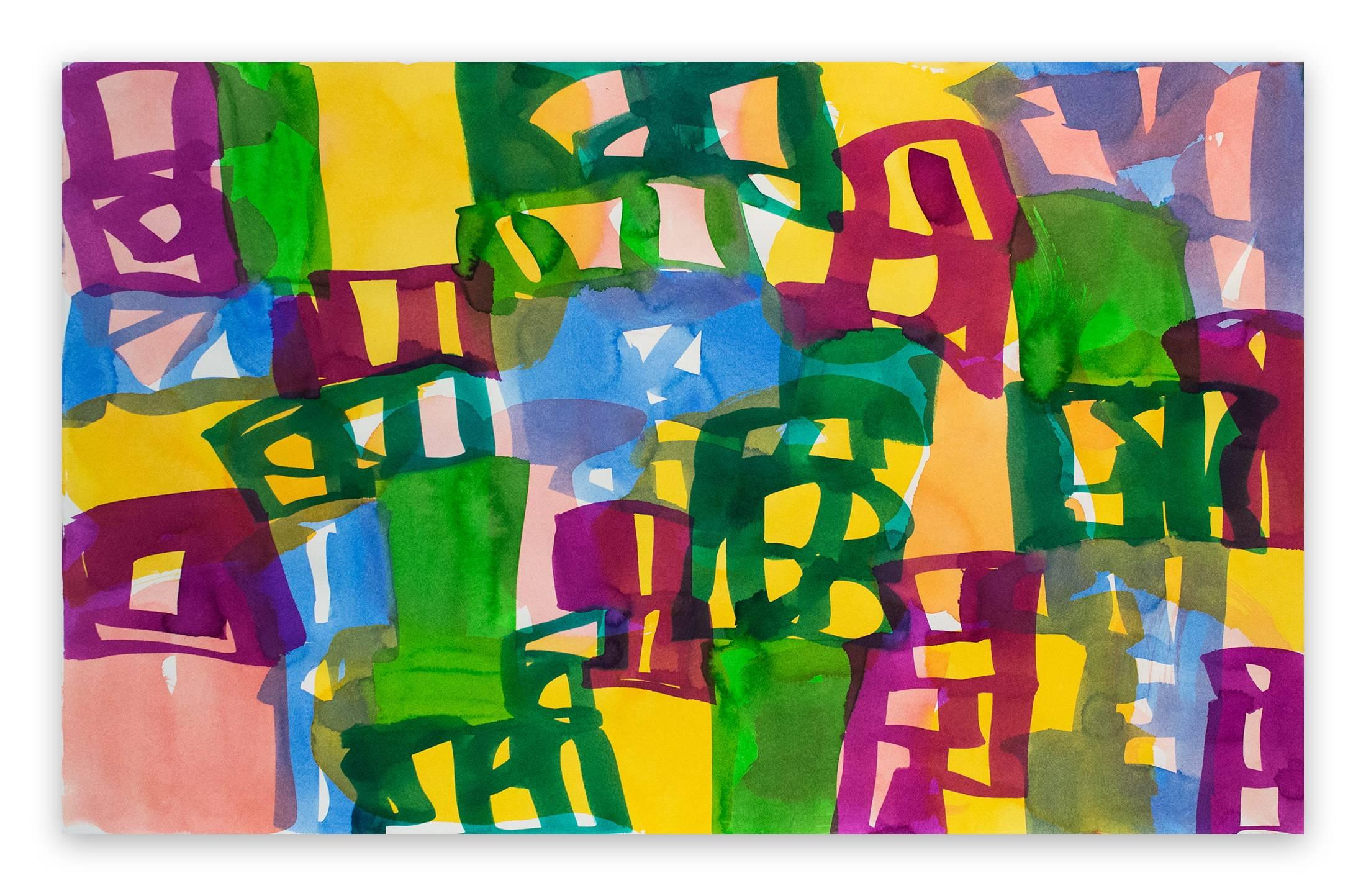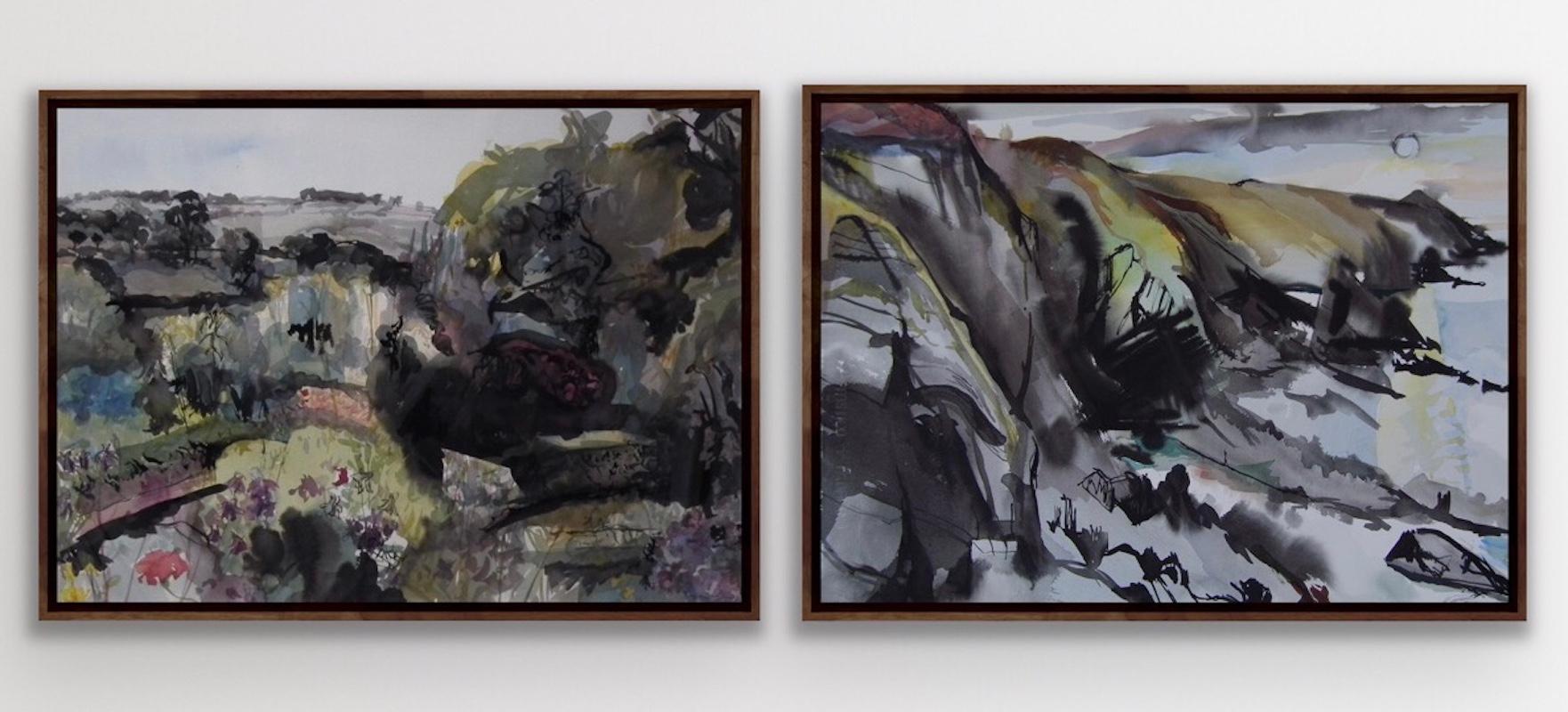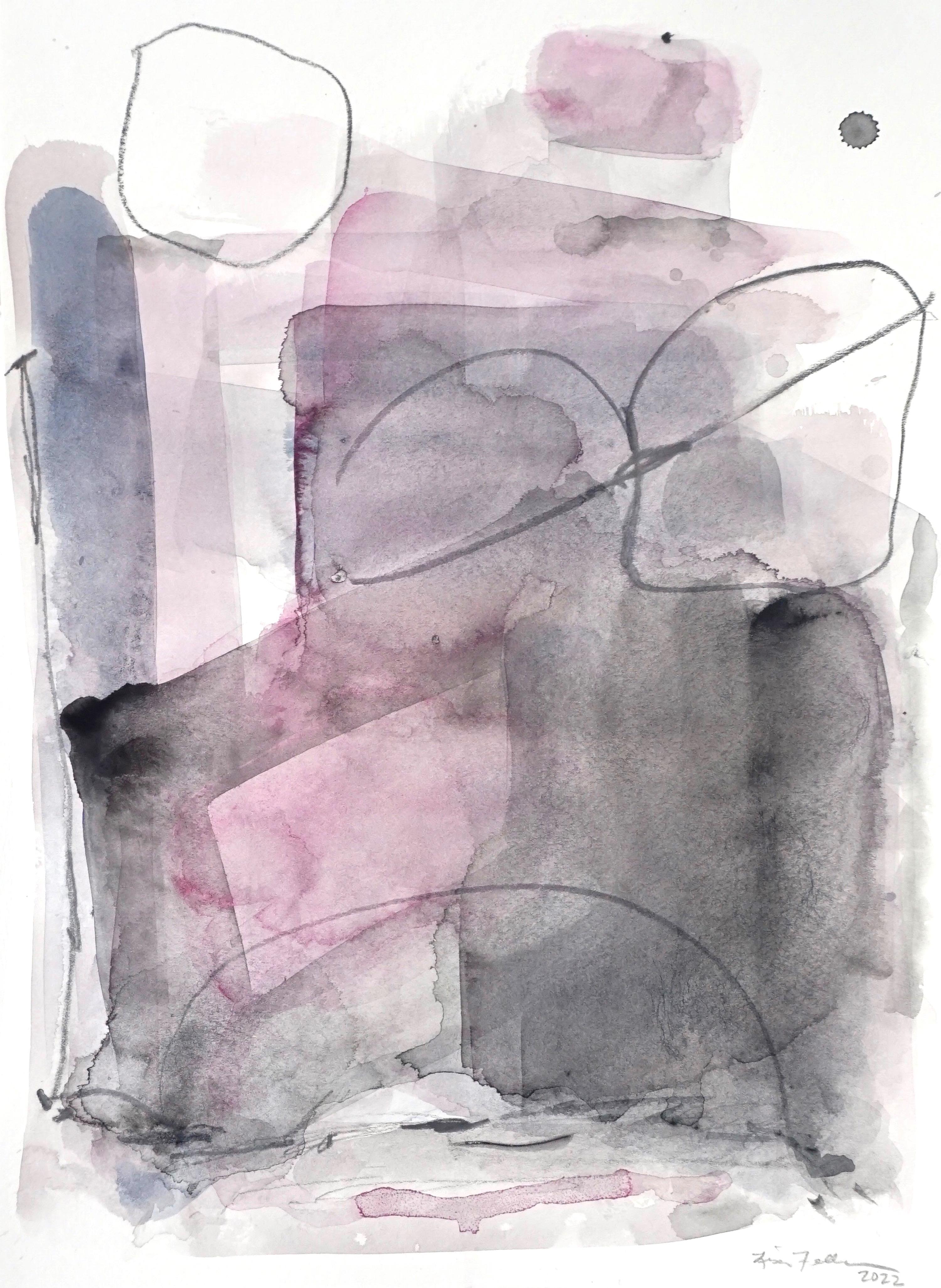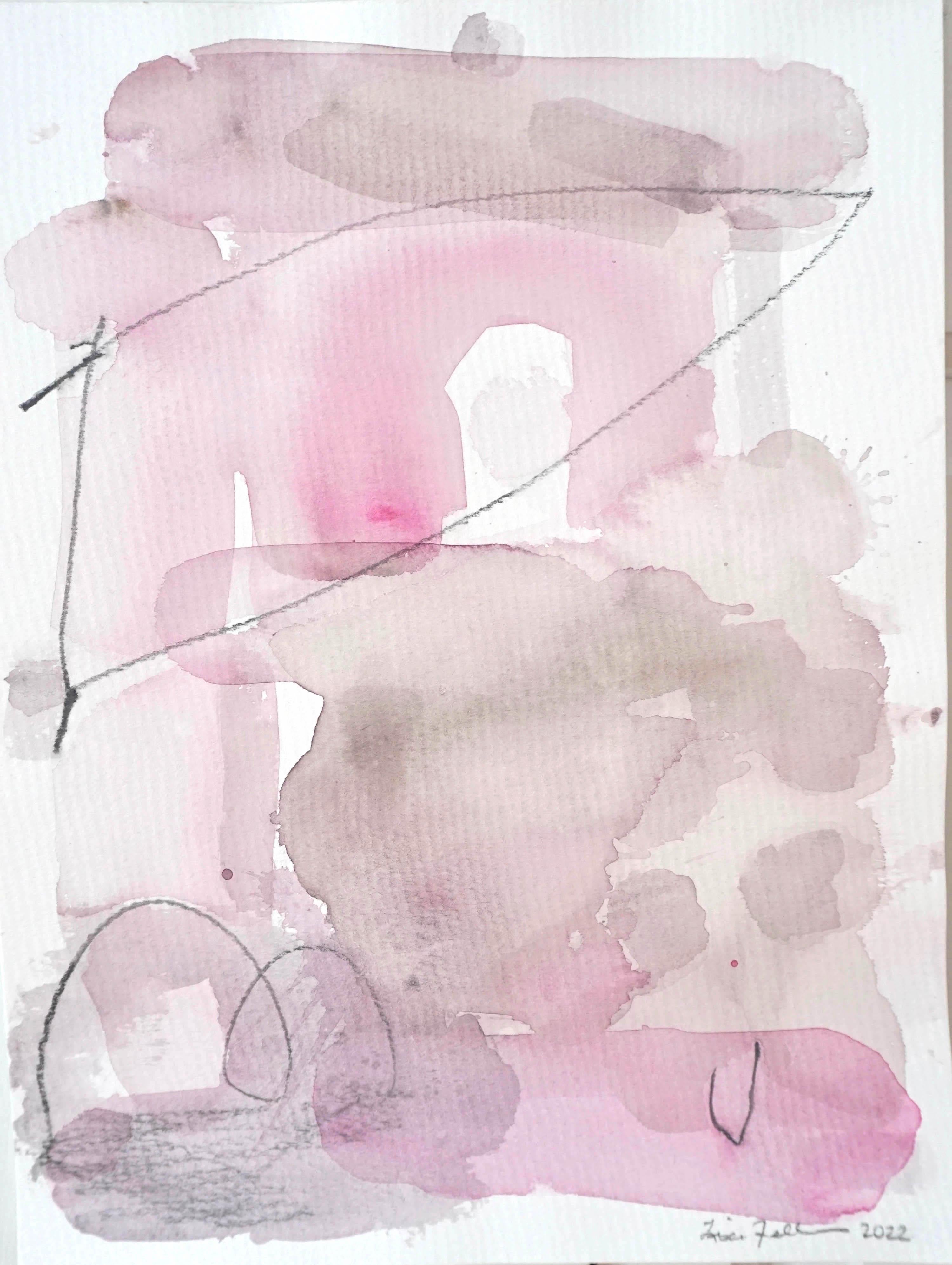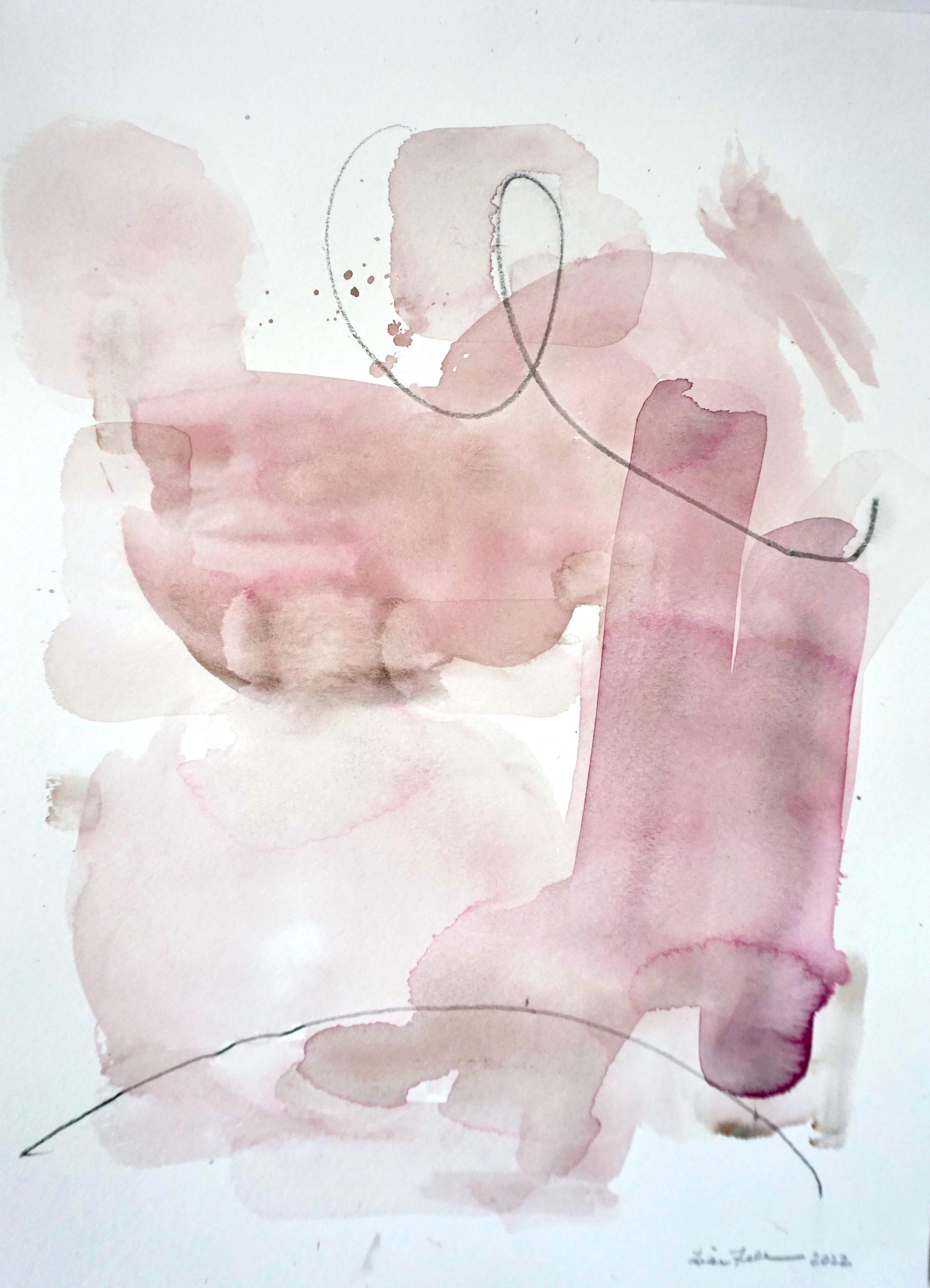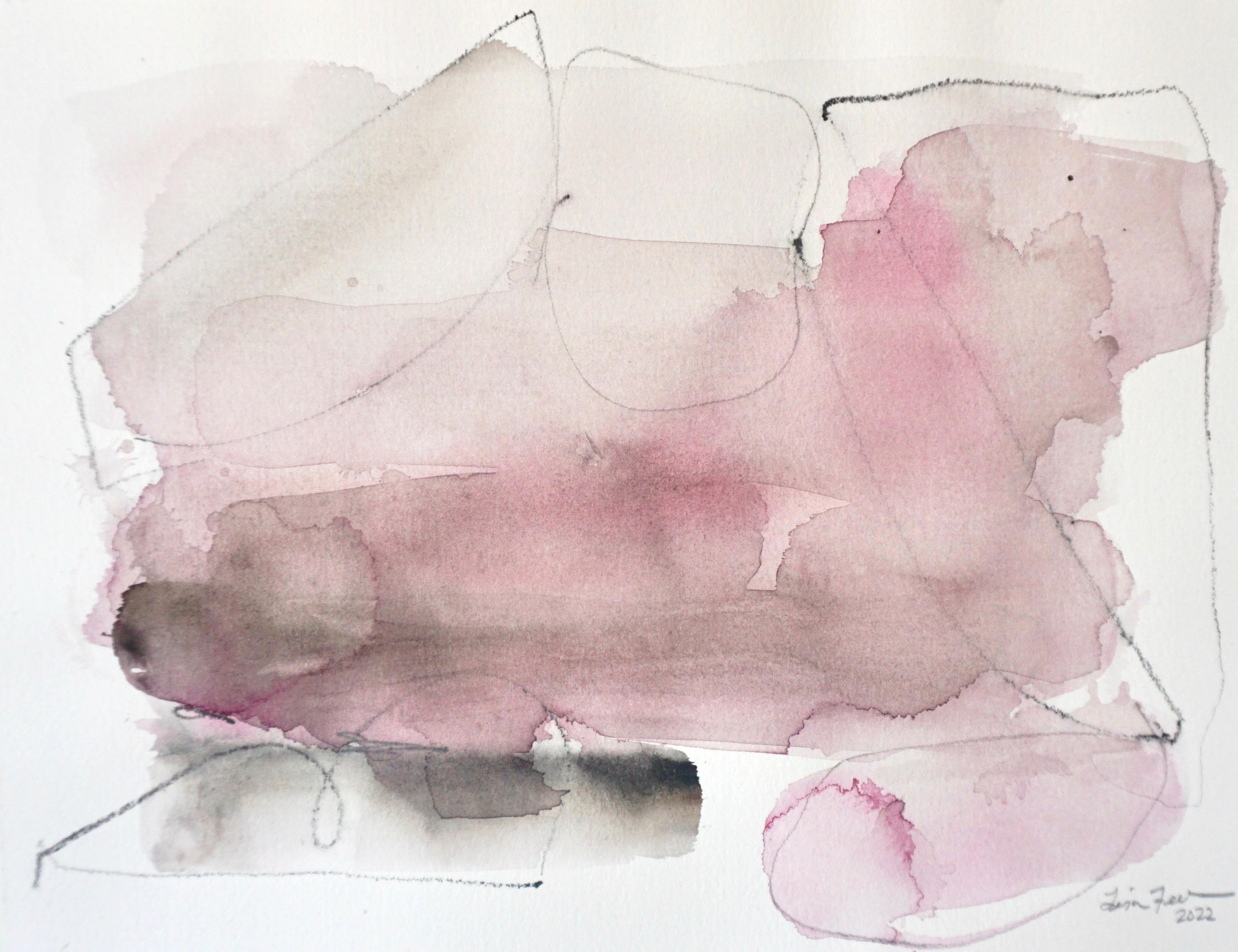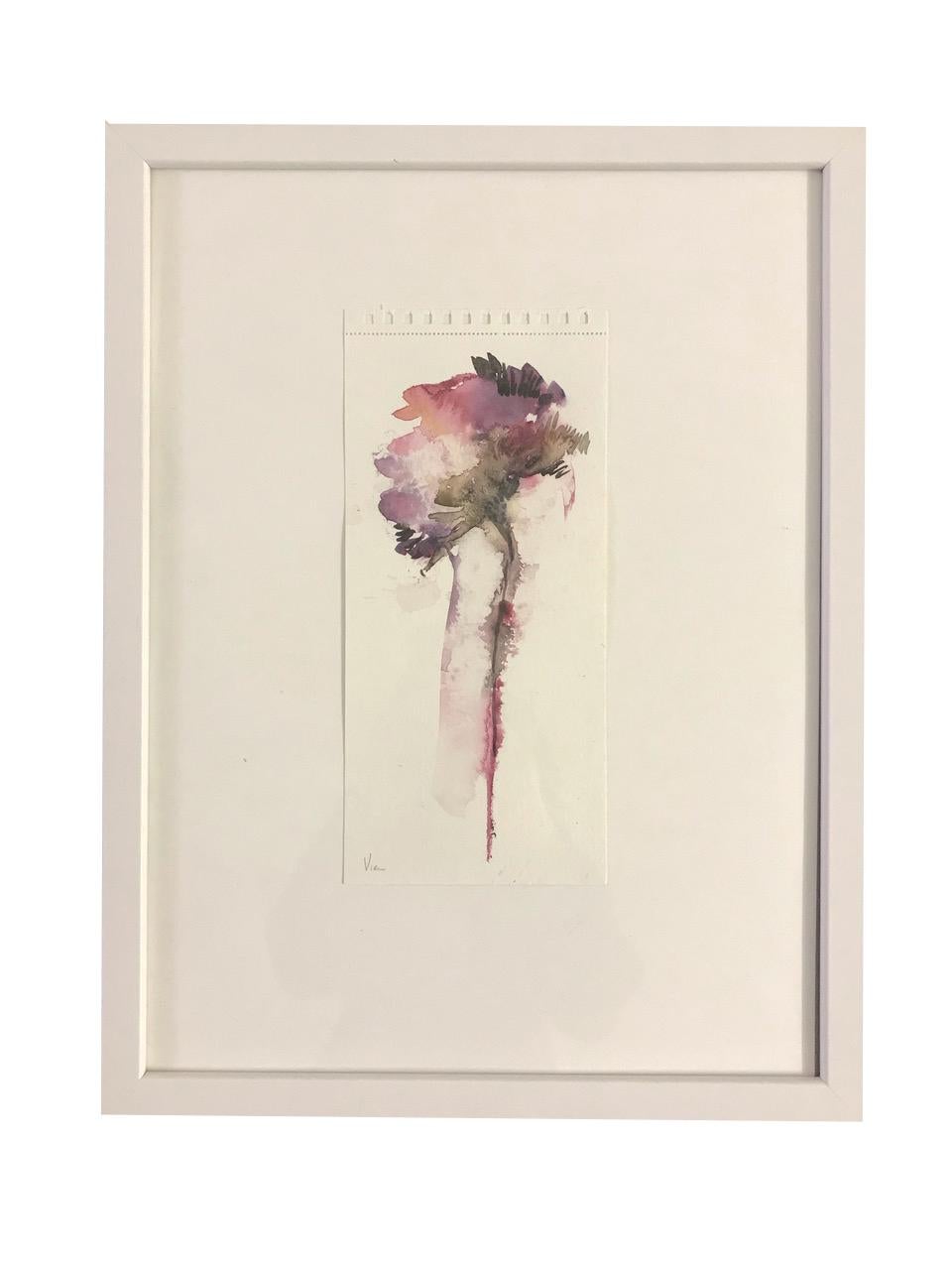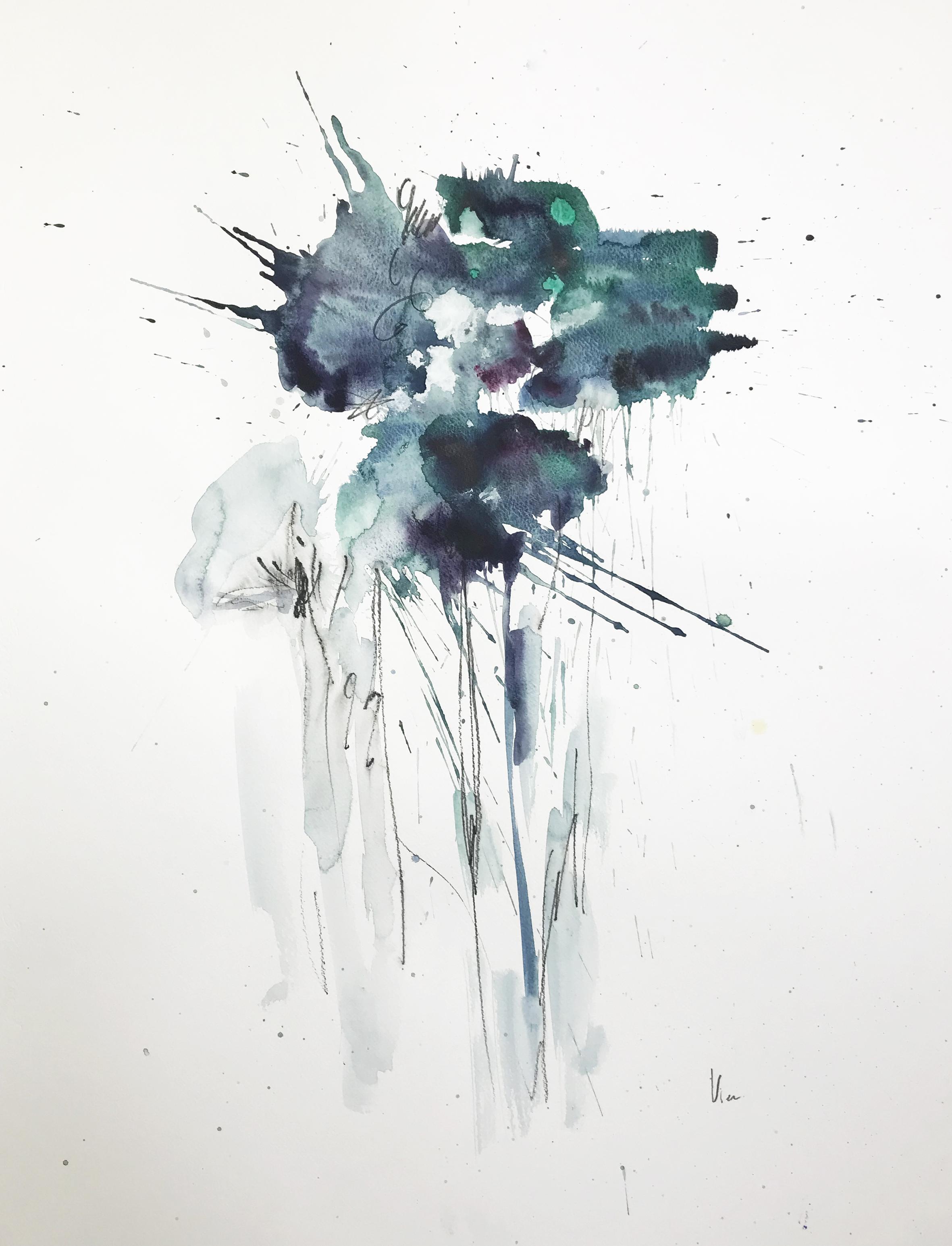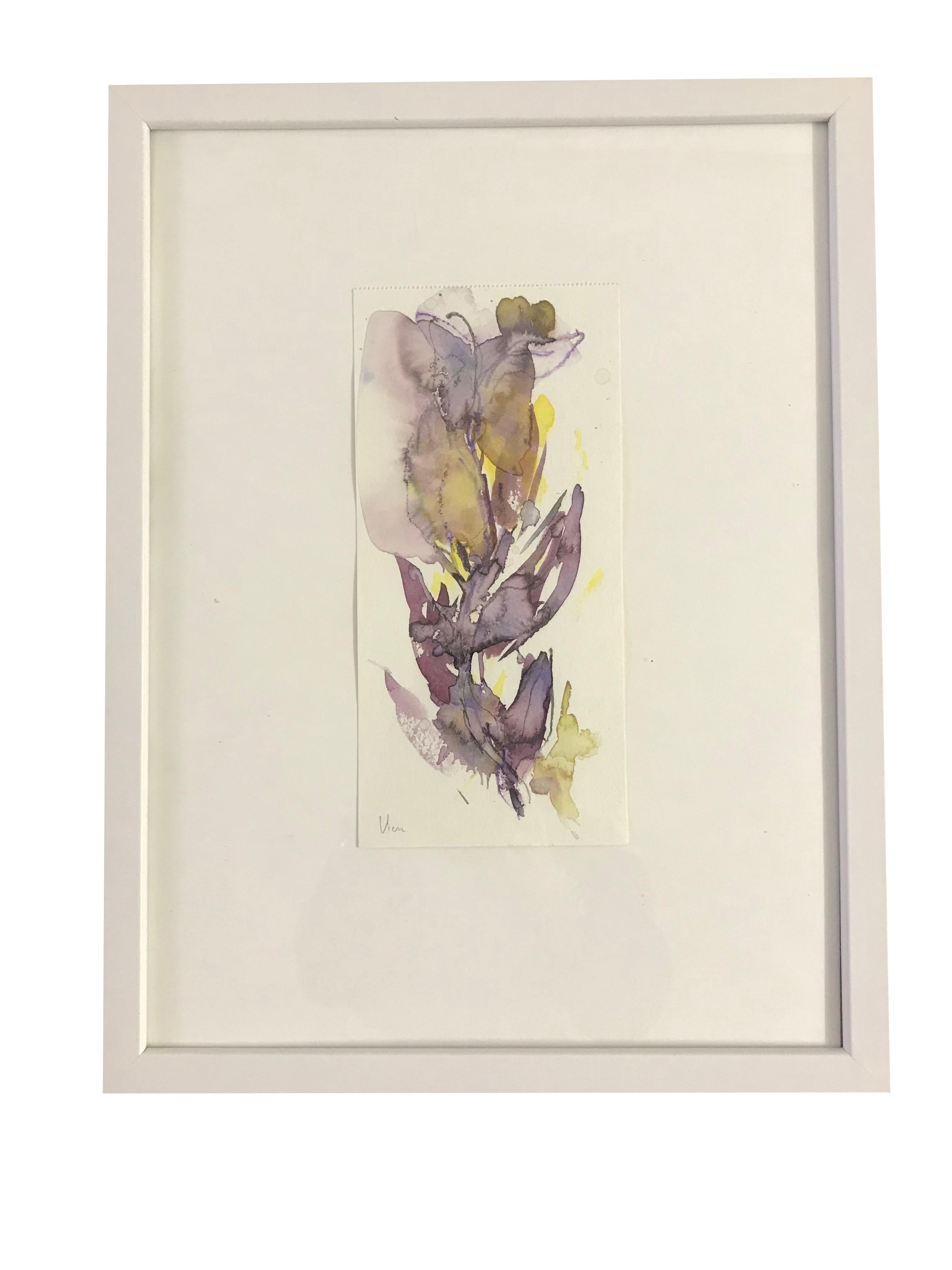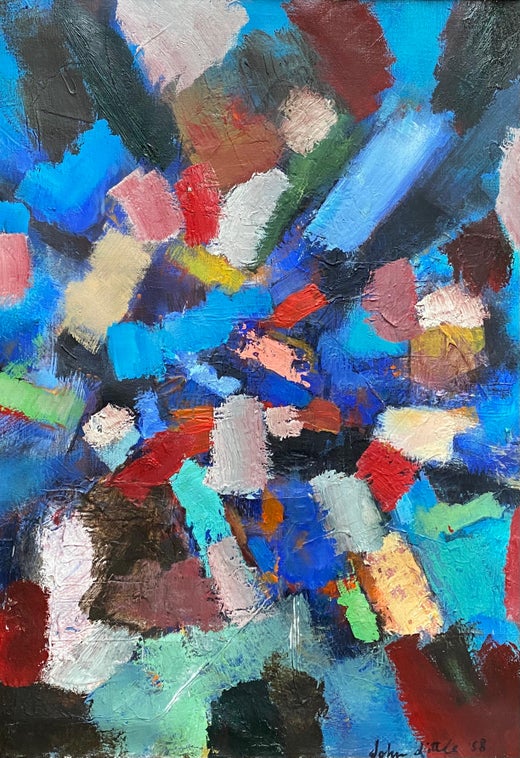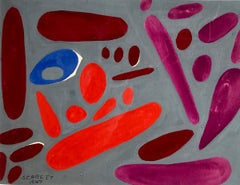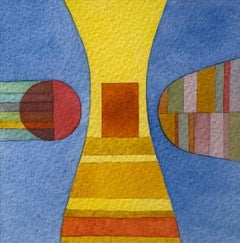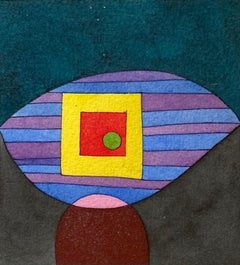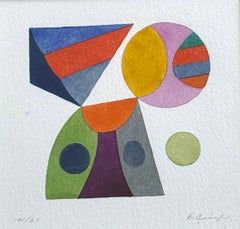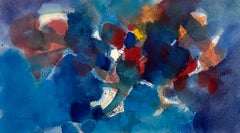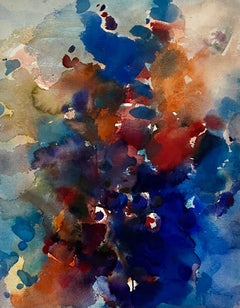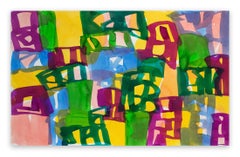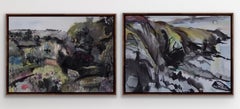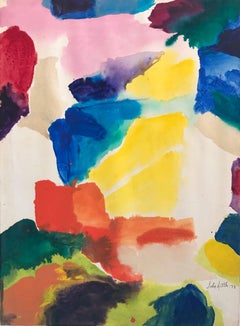
"Untitled"
View Similar Items
Want more images or videos?
Request additional images or videos from the seller
1 of 9
John Little"Untitled"1973
1973
About the Item
- Creator:John Little (1907-1984, American)
- Creation Year:1973
- Dimensions:Height: 15 in (38.1 cm)Width: 11 in (27.94 cm)Depth: 1 in (2.54 cm)
- Medium:
- Movement & Style:
- Period:
- Condition:Good to very good condition; paper is laid down. Slight fold lower right corner. Natural slight toning of paper due to age. No foxing.
- Gallery Location:Southampton, NY
- Reference Number:1stDibs: LU1411773273
John Little
Born in Alabama, John Little attended the Buffalo (NY) Fine Arts Academy as a teenager, until 1927. Soon after, he moved to New York where he began operatic vocal training and opened what would become a very successful textile business designing fabric and wallpaper. In 1933, he enrolled at the Art Students League under the tutelage of George Grosz. Little’s early work consisted predominantly of landscapes, until 1937, when he began studying under Hans Hofmann and his work naturally shifted toward abstraction. During his time with Hofmann, he with artists such as Lee Krasner, George McNeil, Gerome Kamrowski, Giorgio Cavallon, and Perle Fine. Little entered the the service in 1942 as an aerial photographer for the Navy. Returning to New York after the war and with nowhere to stay, he reconnected with Hofmann and moved into his 8th Street studio, alongside his friend Lee Krasner and her husband Jackson Pollock. In 1946, Little earned his first solo exhibition at the California Palace of the Legion of Honor in San Francisco, with a subsequent solo exhibition at Betty Parsons Gallery in New York two years later. In the early 1950s, Little abandoned the flat, linear style in favor of a new aesthetic consisting of the thick, gestural buildup of paint. This stylistic change was concurrent with his move to East Hampton In 1951. This enabled him to continue a close friendship with Krasner and Pollock, who had already left the city in favor of the more rural area around East Hampton. Little and Pollock had a joint exhibition in 1955 at Guild Hall, one year before Pollock’s tragic death. John Little exhibited extensively during his career, with solo shows at Betty Parsons Gallery (1948), Bertha Schaefer Gallery (1957, 1958), Worth Ryder Gallery (1963), A.M. Sachs Gallery (1971), and a retrospective at the Guild Hall Museum (1982). His work can be found in many private, institutional, and corporate collections around the world, including the Metropolitan Museum of Art, Guild Hall Museum, Ball State University Museum of Art, and Galerie Beyeler.
About the Seller
5.0
Platinum Seller
Premium sellers with a 4.7+ rating and 24-hour response times
Established in 1977
1stDibs seller since 2013
525 sales on 1stDibs
Typical response time: 1 hour
Authenticity Guarantee
In the unlikely event there’s an issue with an item’s authenticity, contact us within 1 year for a full refund. DetailsMoney-Back Guarantee
If your item is not as described, is damaged in transit, or does not arrive, contact us within 7 days for a full refund. Details24-Hour Cancellation
You have a 24-hour grace period in which to reconsider your purchase, with no questions asked.Vetted Professional Sellers
Our world-class sellers must adhere to strict standards for service and quality, maintaining the integrity of our listings.Price-Match Guarantee
If you find that a seller listed the same item for a lower price elsewhere, we’ll match it.Trusted Global Delivery
Our best-in-class carrier network provides specialized shipping options worldwide, including custom delivery.More From This Seller
View All“Floating Forms”
By Rolph Scarlett
Located in Southampton, NY
Mid century modern gouache on paper by the well known Canadian/American artist, Rolph Scarlett. Signed and dated in blue pen lower left, 1947. Condition: Good. Framed in thin black matte painted frame with acid free white mat. Not examined out of frame. Overall framed 14.25 by 17 inches.
ROLPH SCARLETT (1889-1984)
Rolph Scarlett was born 1889 in Guelph, Ontario. His long life as an artist began in his teens as a jewelry designer and fabricator. At the age of fourteen he began to design jewelry professionally, a craft which he continued off and on for the rest of his life.
His desire to learn more about art took him to New York in 1908, when American artists were just beginning to experience strong influences from major modern European artists of the day such as Cezanne and Picasso.
Throughout his long career he produced, oil paintings, many works on paper, unique sculptured jewelry, modernist style industrial and furniture designs. Currently there are over 800 of his designs at the Montreal Museum of Fine Arts Design Collection.
In 1928 he moved to Hollywood, California where he became a very successful stage and set designer. In the mid-1930s he met the director of the Museum of Non-objective Art in New York ( Hilla Rebay). He became her close associate and advisor in organizing and running the museum. He was Chief lecturer at the museum (1939 -1946) teaching the new modernism and abstraction to the new generation of artists in the New York art community. Hilla Rebay would introduce him as “Rolph Scarlett, my great find”. So considerable was her enthusiasm for Scarlett, that she and Solomon Guggenheim bought over sixty of his paintings and monotypes for the museum. After Kandinsky and Bauer, there was more of Scarlett’s work in the collection than any other artists.
He participated in many of the museum exhibitions and galleries and was regularly exhibiting his work in Los Angeles, the San Francisco Art Museum, the Art Institute in Chicago, the Modern Age Gallery in N.Y., the Metropolitan Museum, the Whitney Museum and the Museum of Modern Art. He studied for a time at the Art Student League with William Merrit...
Category
1940s Modern Abstract Drawings and Watercolors
Materials
Paper, Gouache
“Untitled #3”
Located in Southampton, NY
Original watercolor on archival paper by the California artist, Edward Darrell Crisp. Signed in pencil lower right margin. Dated in pencil lower left m...
Category
1960s Post-Modern Abstract Drawings and Watercolors
Materials
Watercolor, Archival Paper
“Untitled #4”
Located in Southampton, NY
Original watercolor on archival paper by the California artist, Edward Darrell Crisp. Signed in pencil lower right margin. Dated in pencil lower left m...
Category
1960s Post-Modern Abstract Drawings and Watercolors
Materials
Watercolor, Archival Paper
“Untitled #2”
Located in Southampton, NY
Original watercolor on archival paper by the California artist, Edward Darrell Crisp. Signed in pencil lower right margin. Dated in pencil lower left m...
Category
1960s Post-Modern Abstract Drawings and Watercolors
Materials
Watercolor, Archival Paper
“Untitled #1”
Located in Southampton, NY
Original watercolor on archival paper by the California artist, Edward Darrell Crisp. Signed by the artist in pencil lower right margin. Dated in penci...
Category
1960s Post-Modern Abstract Drawings and Watercolors
Materials
Watercolor, Archival Paper
“Abstract Face”
By Lloyd Raymond Ney
Located in Southampton, NY
Here for your consideration is a well executed original watercolor and gouache abstract on archival paper by the New Hope, Pennsylvania artist, Lloyd Ney. Ney was considered to be a...
Category
1960s Post-Modern Abstract Drawings and Watercolors
Materials
Watercolor, Gouache, Archival Paper
You May Also Like
Modernist Abstract Expressionist Watercolor Painting Bauhaus Weimar Pawel Kontny
By Pawel Kontny
Located in Surfside, FL
Abstract watercolor composition bearing the influence of the earlier color-block compositions of Paul Klee.
Pawel August Kontny, (Polish-German-American artist) He was born in Laurahuette, Poland, in 1923, the son of a wealthy pastry shop owner. In 1939 he began studying architecture in Breslau where he was introduced to the European masters and to the work of some of the German Expressionists, soon afterward banned as "degenerate artists" and removed from museums throughout Germany by the Nazi regime. His studies were interrupted by World War II. Drafted into the German army, traveling in many countries as a soldier, he sketched various landscapes but in 1945, he was captured and held as a prisoner of war in Italy. After the war, he studied at the Union of Nuremberg Architects to help design buildings to replace ones destroyed in the war. He recorded his impressions of the local population and the landscapes through his watercolors and drawings. Pawel Kontny thereafter moved to Nuremberg, Germany, becoming a member of the Union of Nuremberg Architects and helping to rebuild the city's historic center. He soon decided to concentrate on his professional art career. He married Irmgard Laurer, a dancer with the Nuremberg Opera. Pavel Kontny 's career as an artist was launched with his participation in an all German exhibition, held at the Dusseldorf Museum in 1952. He held one-man shows in Germany, Switzerland and the United States. During his trip to the United States in 1960, Kontny became instantly enamored with Colorado, and decided to relocate to Cherry Hills with his wife and two children. He quickly established himself in the local art community, being affiliated for a time with Denver Art Galleries and Saks Galleries. His subject matter became the Southwest. During this time he received the Prestigious Gold Medal of the Art Academy of Rome. His extensive travel provided material for the paintings he did using his hallmark marble dust technique. he also worked equally in pastel, watercolor, charcoal and pencil-and-ink. in a style which merged abstraction and realist styles, influenced by Abstract Expressionist painting and South Western American landscapes. This one is influenced by California Abstract Expressionist artist Sam Francis. In the early 1960s he was one of only a few European-born professional artists in the state, a select group that included Herbert Bayer (1900-1985), a member of the prewar Bauhaus in Weimar and Dessau, Germany, and Roland Detre (1903-2001), a Hungarian modernist painter. As a Denver, Colorado resident, Pavel Kontny exhibited at galleries and museums throughout the United States, Germany and Japan. There, he was inspired by frequent trips to Native American pueblos in the Southwest, as well as by the study of the Plains Indians of Montana and Wyoming. Over the years Kontny had a number of students and generously helped young artist by hosting exhibitions at his Cherry Hills home. For many years he generously donated his paintings to support charitable causes in Denver. Influences during his European years included German pastelist C.O. Muller, German Informel painter Karl Dahmen and Swiss artist, Hans Erni. In the early 1950s his painting style showed the influence of the Die Brücke (The Bridge), a group of German expressionist artists formed in Dresden in 1905 who had a major impact on the evolution of modern art in the twentieth century in Germany. By the middle of the decade his style incorporated more referential abstraction and total abstraction, resulting in part from his study of Hans Hartung, a German artist based in Paris who exhibited his gestural abstract work in Germany. The American moon landing in 1969 inspired Paul Kontny...
Category
20th Century Abstract Expressionist Abstract Drawings and Watercolors
Materials
Watercolor, Archival Paper
Modernist Abstract Expressionist Watercolor Painting Bauhaus Weimar Artist
By Pawel Kontny
Located in Surfside, FL
Abstract watercolor composition bearing the influence of the earlier color-block compositions of Paul Klee and Abstract Expressionist master Sam Francis.
Pawel August Kontny, (Polish-German-American artist) He was born in Laurahuette, Poland, in 1923, the son of a wealthy pastry shop owner. In 1939 he began studying architecture in Breslau where he was introduced to the European masters and to the work of some of the German Expressionists, soon afterward banned as "degenerate artists" and removed from museums throughout Germany by the Nazi regime. His studies were interrupted by World War II. Drafted into the German army, traveling in many countries as a soldier, he sketched various landscapes but in 1945, he was captured and held as a prisoner of war in Italy. After the war, he studied at the Union of Nuremberg Architects to help design buildings to replace ones destroyed in the war. He recorded his impressions of the local population and the landscapes through his watercolors and drawings. Pawel Kontny thereafter moved to Nuremberg, Germany, becoming a member of the Union of Nuremberg Architects and helping to rebuild the city's historic center. He soon decided to concentrate on his professional art career. He married Irmgard Laurer, a dancer with the Nuremberg Opera. Pavel Kontny 's career as an artist was launched with his participation in an all German exhibition, held at the Dusseldorf Museum in 1952. He held one-man shows in Germany, Switzerland and the United States. During his trip to the United States in 1960, Kontny became instantly enamored with Colorado, and decided to relocate to Cherry Hills with his wife and two children. He quickly established himself in the local art community, being affiliated for a time with Denver Art Galleries and Saks Galleries. His subject matter became the Southwest. During this time he received the Prestigious Gold Medal of the Art Academy of Rome. His extensive travel provided material for the paintings he did using his hallmark marble dust technique. he also worked equally in pastel, watercolor, charcoal and pencil-and-ink. in a style which merged abstraction and realist styles, influenced by Abstract Expressionist painting and South Western American landscapes. In the early 1960s he was one of only a few European-born professional artists in the state, a select group that included Herbert Bayer (1900-1985), a member of the prewar Bauhaus in Weimar and Dessau, Germany, and Roland Detre (1903-2001), a Hungarian modernist painter. As a Denver, Colorado resident, Pavel Kontny exhibited at galleries and museums throughout the United States, Germany and Japan. There, he was inspired by frequent trips to Native American pueblos in the Southwest, as well as by the study of the Plains Indians of Montana and Wyoming. Over the years Kontny had a number of students and generously helped young artist by hosting exhibitions at his Cherry Hills home. For many years he generously donated his paintings to support charitable causes in Denver. Influences during his European years included German pastelist C.O. Muller, German Informel painter Karl Dahmen and Swiss artist, Hans Erni. In the early 1950s his painting style showed the influence of the Die Brücke (The Bridge), a group of German expressionist artists formed in Dresden in 1905 who had a major impact on the evolution of modern art in the twentieth century in Germany. By the middle of the decade his style incorporated more referential abstraction and total abstraction, resulting in part from his study of Hans Hartung, a German artist based in Paris who exhibited his gestural abstract work in Germany. The American moon landing in 1969 inspired Paul Kontny...
Category
20th Century Abstract Expressionist Abstract Drawings and Watercolors
Materials
Watercolor, Archival Paper
Ambassade 47 (Abstract Expressionism painting)
By Melissa Meyer
Located in London, GB
Ambassade 47 (Abstract Expressionism painting)
Watercolor on hot press paper - Unframed
This work is part of the watercolour series titled Ambassade which was named after a visit a...
Category
Early 2000s Abstract Expressionist Abstract Drawings and Watercolors
Materials
Paper, Watercolor
Sun Setting Over Mwnt and A Cottage Garden in Monmouthshire
By Duncan MacDonald Johnson
Located in Deddington, GB
Duncan MacDonald Johnson
A Cottage Garden in Monmouthshire
Original Landscape Painting
Watercolour Paint on Paper
Image Size: H 56cm x W 76cm
The work is sold mounted but not framed . Overall size with mount is H 73cm x W 94cm
Sold Unframed
The work is sold unframed although shown as framed in the photographs
Please note that in situ images are purely an indication of how a piece may look.
A cottage garden in Monmouthshire is an original landscape painting by Duncan MacDonald Johnson. The sunlight in spring brought out the richness of this garden in Monmouthshire in contrast to the farmland surrounding it. It was a joy to sit in this garden for two days and watch Spring bloom all around me.
Duncan MacDonald Johnson
Sun Setting Over Mwnt
Original Watercolour Painting
Watercolour on Paper
Unframed size : H 56 cm x W 76 cm
Overall size with mount is H 73cm x W 94 cm
The work is sold mounted but not framed .
Sold unframed
The work is sold unframed although shown as framed in the photographs
Sun Setting Over Mwnt is an original watercolour painting by Duncan MacDonald Johnson. This piece was painted on the cliff path from Aberporth to Mwnt in Ceredigion in 2015. It was completed in situ as the sun was setting. It is a quiet spot...
Category
2010s Abstract Expressionist Abstract Drawings and Watercolors
Materials
Paper, Watercolor
Rosey Combo, pastel pink and grey abstract watercolor painting on archival paper
By Lisa Fellerson
Located in New York, NY
Lisa Fellerson’s paintings provoke an interplay and tension between line, shape, and color. With no preconceived idea in mind, she begins by dripping, scrapping, and gouging acrylic ...
Category
2010s Abstract Expressionist Abstract Drawings and Watercolors
Materials
Charcoal, Mixed Media, Watercolor, Archival Paper
When in Rose, pastel pink abstract watercolor painting on archival paper
By Lisa Fellerson
Located in New York, NY
Lisa Fellerson’s paintings provoke an interplay and tension between line, shape, and color. With no preconceived idea in mind, she begins by dripping, scrapping, and gouging acrylic ...
Category
2010s Abstract Expressionist Abstract Drawings and Watercolors
Materials
Watercolor, Archival Paper, Charcoal, Mixed Media
